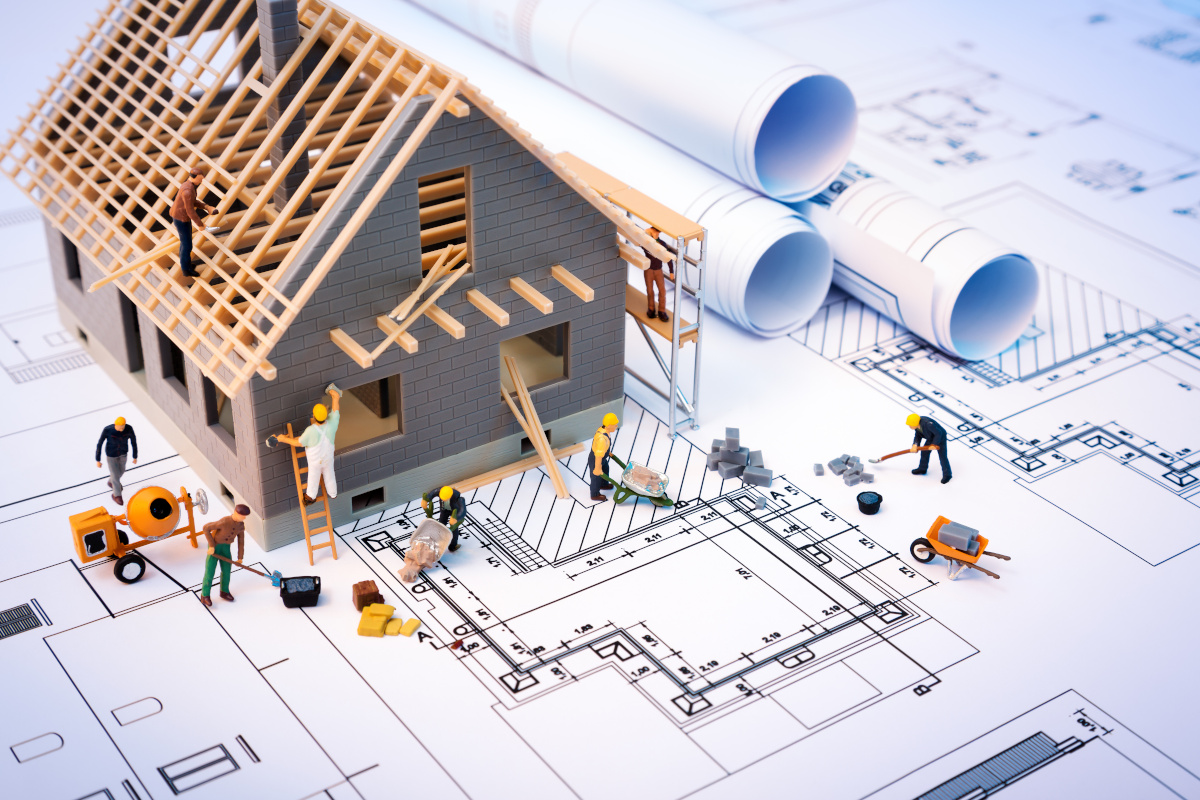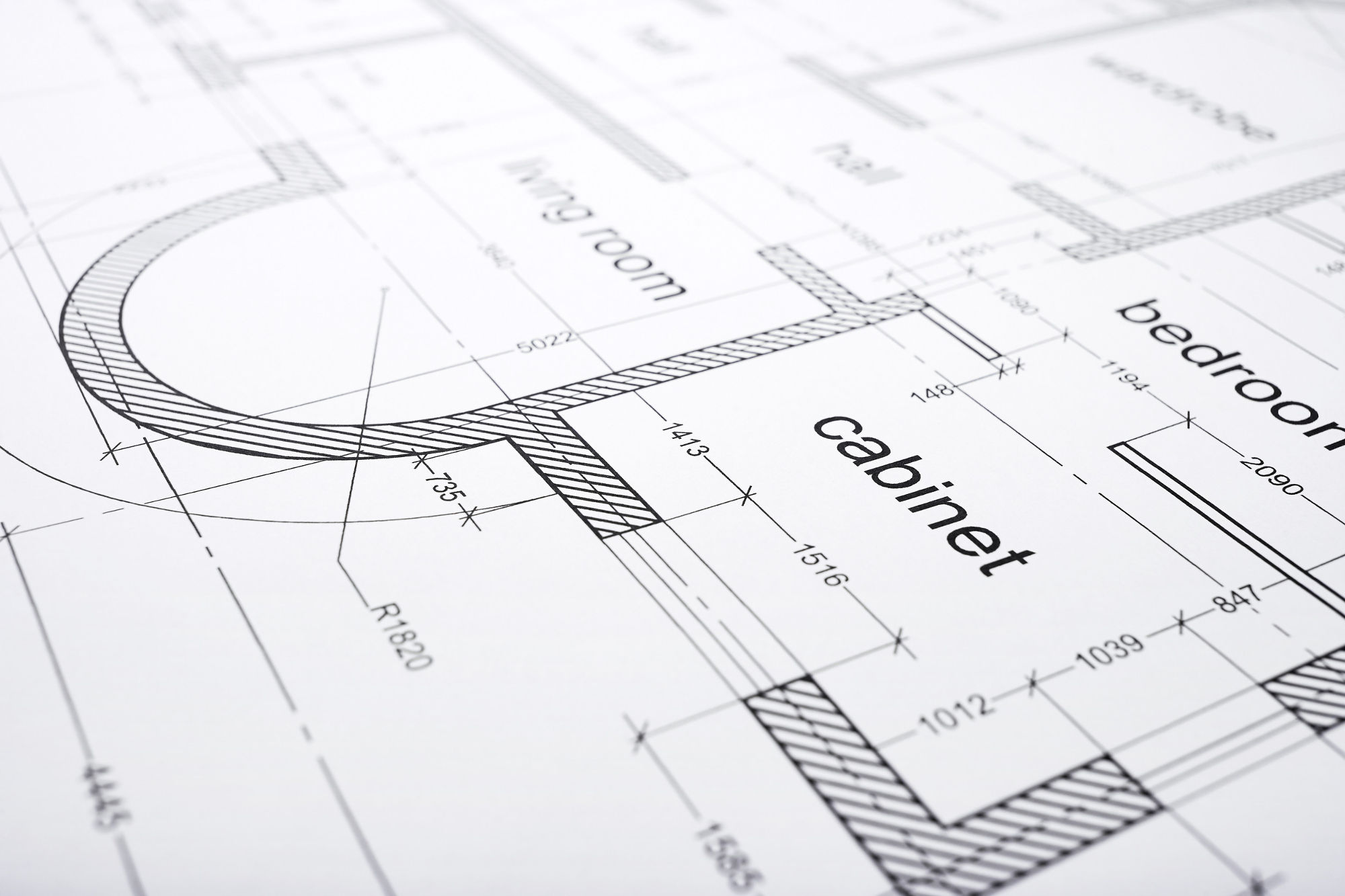Creating Your Dream Floor Plan: A Blueprint for Success
August 18th, 2025 by admin

Designing a floor plan for your new custom home is one of the most exciting phases of the home-building process. It's where your vision begins to take shape, where dreams transform into practical layouts, and where you truly get to personalize your living space. At Owner Builder Network, we've helped thousands of homeowners craft their ideal floor plans since 1997, and we're sharing our top tips to help you create a floor plan that perfectly suits your lifestyle, needs, and budget.
Why Your Floor Plan Matters
Your floor plan is more than just a technical drawing - it's the foundation of your daily life. A well-designed floor plan can:
- Maximize your living space and functionality
- Improve traffic flow and reduce wasted space
- Enhance energy efficiency and natural lighting
- Increase your property's resale value
- Support your current lifestyle while anticipating future needs
Let's dive into the essential steps and considerations for creating a floor plan that works perfectly for you.
Step 1: Assess Your Needs and Lifestyle
Before drawing a single line, take time to analyze how you actually live and what you need from your home.
Questions to Ask Yourself:
- How many people will live in the home now and potentially in the future?
- Do you need dedicated spaces for working from home, hobbies, or exercise?
- Do you entertain frequently? How do you prefer to entertain?
- Are there mobility considerations for anyone in your household?
- What are your storage needs?
- Do you prefer open living spaces or more defined rooms?
- How important is indoor-outdoor flow?
Create a prioritized list of "must-haves" versus "nice-to-haves." This will guide your decisions when you inevitably need to make trade-offs during the design process.
Step 2: Determine Your Ideal Space Allocation
With a clear understanding of your needs, decide how to distribute your square footage among different areas of the home.
A common rule of thumb for space allocation in a typical home:
- Living Areas: 30-35% (living room, family room, etc.)
- Sleeping Areas: 20-25% (bedrooms)
- Service Areas: 20-25% (kitchen, bathrooms, laundry)
- Storage & Circulation: 15-20% (closets, hallways, stairs)
Adjust these percentages based on your unique priorities. For example, if you love cooking and entertaining, you might allocate more space to the kitchen and dining areas.
Step 3: Consider Traffic Patterns
Traffic flow can make or break a floor plan. Poor circulation leads to daily frustration, while thoughtful traffic patterns create harmony in your home.
Key Traffic Flow Tips:
- Main pathways should be at least 36 inches wide (42 inches is even better)
- Avoid creating pathways through conversation or activity areas
- Plan for natural movement between frequently-used spaces
- Consider how doors swing and ensure they don't block hallways or other doors
- Create a "mud room" or entry buffer zone to prevent guests from walking directly into your main living space
Think about how you move through your current home. What works? What doesn't? Learn from these experiences when planning your new layout.
Step 4: Embrace Room Adjacencies
Strategic room placement can significantly enhance convenience and efficiency in daily living.
Smart Adjacencies to Consider:
- Kitchen near dining areas and exterior doors (for grilling or outdoor dining)
- Laundry room near bedrooms to minimize carrying distance
- Mudroom or drop zone near the most frequently used entrance
- Guest bedrooms away from main living areas for privacy
- Primary bedroom separated from noisier areas of the home
- Home office in a quiet location with good natural light
Consider how rooms interact with each other and place complementary spaces near one another while separating conflicting activities.
Step 5: Optimize Room Orientations
The direction your rooms face affects lighting, energy efficiency, and the overall feel of your home.
Orientation Guidelines:
- East-facing bedrooms: Morning sun can provide a natural wake-up
- West-facing living areas: Afternoon and evening light for relaxation
- North-facing home offices: Consistent, glare-free natural light
- South-facing windows: Maximum solar gain in winter (consider overhangs for summer shade)
- Kitchen orientation: Consider morning light to energize breakfast time
Take advantage of any scenic views by positioning windows and outdoor living spaces accordingly.
Step 6: Get the Dimensions Right
Proper room sizing is crucial for comfort and functionality. While dimensions will vary based on personal preference and budget, here are some guidelines:
Typical Room Dimension Ranges:
- Primary Bedroom: 12' x 14' to 14' x 16'
- Secondary Bedrooms: 10' x 10' to 12' x 12'
- Kitchen: 12' x 12' minimum for full functionality
- Dining Room: 10' x 12' for seating 6-8 people
- Living Room: 12' x 18' to 16' x 20' depending on family size
- Bathroom: 5' x 8' minimum for a full bath
- Hallways: 3' to 4' wide
- Doorways: 2'8" to 3' wide (consider 3' for accessibility)
Don't just think about square footage—room proportions matter too. A well-proportioned room (typically with a length-to-width ratio between 1:1 and 1:1.5) is more aesthetically pleasing and easier to furnish than oddly shaped spaces.
Step 7: Design for Furniture and Function
A common mistake in floor planning is failing to account for how furniture will fit in the space.
Tips for Furniture Planning:
- Measure your existing furniture or research standard dimensions
- Draw furniture to scale on your floor plan
- Allow for proper clearances (36" for walkways, 18" between seating and coffee tables)
- Consider multiple furniture arrangements for flexibility
- Plan for electrical outlets where you'll need them
- Consider sightlines between rooms and to exterior views
- Plan wall space for artwork, TVs, and bookshelves
Remember that empty rooms always look bigger than furnished ones. What seems spacious on paper might feel cramped once you add furniture.
Step 8: Consider Future Flexibility
Your needs will likely change over time. Building flexibility into your floor plan can save costly renovations later.
Design for Adaptability:
- Include a flex room that could serve as an office, bedroom, or hobby space
- Consider wider doorways throughout for potential future accessibility needs
- Design with possible future expansions in mind
- Plan for aging-in-place with single-level living or space for a future elevator
- Include infrastructure for technology upgrades (conduit for future wiring)
A truly successful floor plan grows with your family and adapts to changing circumstances.
Step 9: Balance Open and Closed Spaces
While open floor plans remain popular, a thoughtful mix of open and private spaces often creates the most livable home.
Finding the Right Balance:
- Consider using partial walls, columns, or ceiling treatments to define spaces without full separation
- Include some private areas for retreat and quiet activities
- Plan acoustic separation for noisy activities
- Create visual connections between spaces through aligned doorways or interior windows
- Use consistent flooring in open areas to unify the space
Remember that completely open plans can present challenges with noise, privacy, and keeping spaces tidy. Thoughtful zoning can provide the best of both worlds.
Step 10: Incorporate Storage Solutions
Adequate storage is critical for a clutter-free, functional home, yet it's often underestimated in floor planning.
Storage Planning Essentials:
- Include walk-in closets in bedrooms if space allows (minimum 5' x 5')
- Plan for linen closets near bathrooms
- Include pantry space for kitchen storage
- Designate space for seasonal item storage
- Consider built-in cabinetry to maximize vertical storage
- Plan utility spaces for cleaning supplies and equipment
- Don't forget garage storage beyond just parking
The right storage solutions will keep your beautiful home looking its best for years to come.
Step 11: Use Professional Tools and Resources
While sketching ideas on paper is a great starting point, utilizing professional tools can help refine your plan.
Helpful Resources:
- Floor planning software (many free options are available online)
- Scale rulers and grid paper for hand drawings
- Design magazines and websites for inspiration
- Home design books with standard dimensions and guidelines
- Professional design consultation (even a few hours can provide valuable insights)
At Owner Builder Network, we help our clients access professional resources while maintaining control over their design decisions.
Step 12: Test and Refine Your Plan
Before finalizing your floor plan, thoroughly review it for potential issues.
Ways to Test Your Floor Plan:
- Walk through the plan mentally, imagining daily routines
- Test traffic patterns by tracing common paths
- Verify that doors don't conflict with each other
- Ensure adequate wall space for furniture placement
- Consider how natural light will enter each space throughout the day
- Review the plan with all family members for feedback
- If possible, tape out room dimensions in your yard or a large space to get a feel for the scale
Don't rush this phase - taking time to refine your plan will pay dividends throughout the construction process and for years to come.
Common Floor Plan Mistakes to Avoid
Learn from others' experiences by avoiding these frequent floor planning pitfalls:
- Inadequate storage: Never underestimate your storage needs
- Poor traffic flow: Avoid creating bottlenecks or awkward pathways
- Misplaced windows: Consider furniture placement when locating windows
- Ignoring the lot: Your floor plan should work with your site's features and orientation
- Too many hallways: Excessive hallways waste valuable square footage
- Insufficient lighting: Plan for natural light and electrical lighting in every space
- Overlooking HVAC space: Account for mechanical systems in your layout
- Prioritizing trends over function: Design for how you actually live, not just for aesthetics
Remember that a beautiful but impractical home will quickly lose its charm in daily use.
Making Your Floor Plan a Reality with Owner Builder Network
Creating the perfect floor plan is just one step in the journey to building your custom home. At Owner Builder Network, we specialize in empowering homeowners to take control of their home-building process while providing the support, resources, and expertise needed for success.
When you're ready to move from floor plan to finished home, we offer:
- Complete financing solutions with builder-friendly draw schedules
- Access to contractors and suppliers at builder's cost
- Ongoing support throughout the construction process
- Educational workshops and networking opportunities with other owner-builders
- Decades of experience helping homeowners build their dream homes
Your floor plan is the blueprint for your future - make sure it's designed with care and executed with confidence. With the right plan and the right support team, your dream home is within reach.
Ready to bring your floor plan to life? Contact Owner Builder Network today to learn how we can help you build the custom home you've always wanted, exactly to your specifications and within your budget.
Posted in: Building Projects


